Irruptions: A Sudden Surge of New Birds in Town
Updated: Mar. 21, 2024
Irruptions bring surprise visitors from the far north to your feeders—an opportunity to witness one of birding’s great mysteries. Here are the answers to some of your biggest questions about these sudden bird influxes.
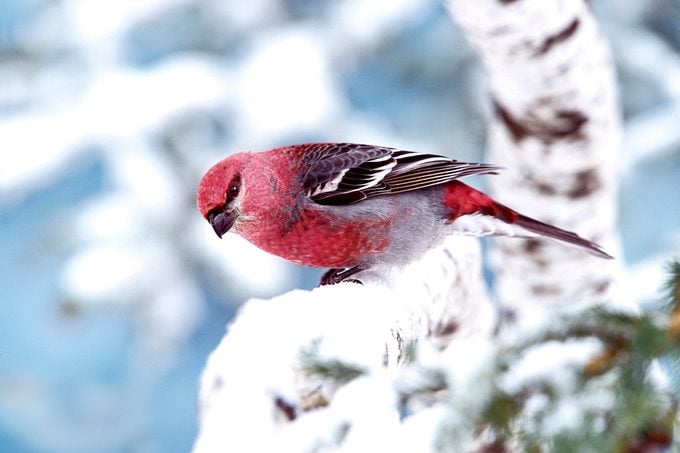
Irruptions involve some of the smallest birds that spend their springs and summers in the northern boreal forest, which stretches from Alaska to Newfoundland and Labrador. Once winter rolls around, waves of these Arctic-friendly fliers occasionally move south into the northern tier of the United States, and sometimes as far south as Florida.
To know more about this bird phenomenon, we turn to an expert: Jeff Wells, vice president for boreal conservation at the National Audubon Society.
On This Page
What is a bird irruption?
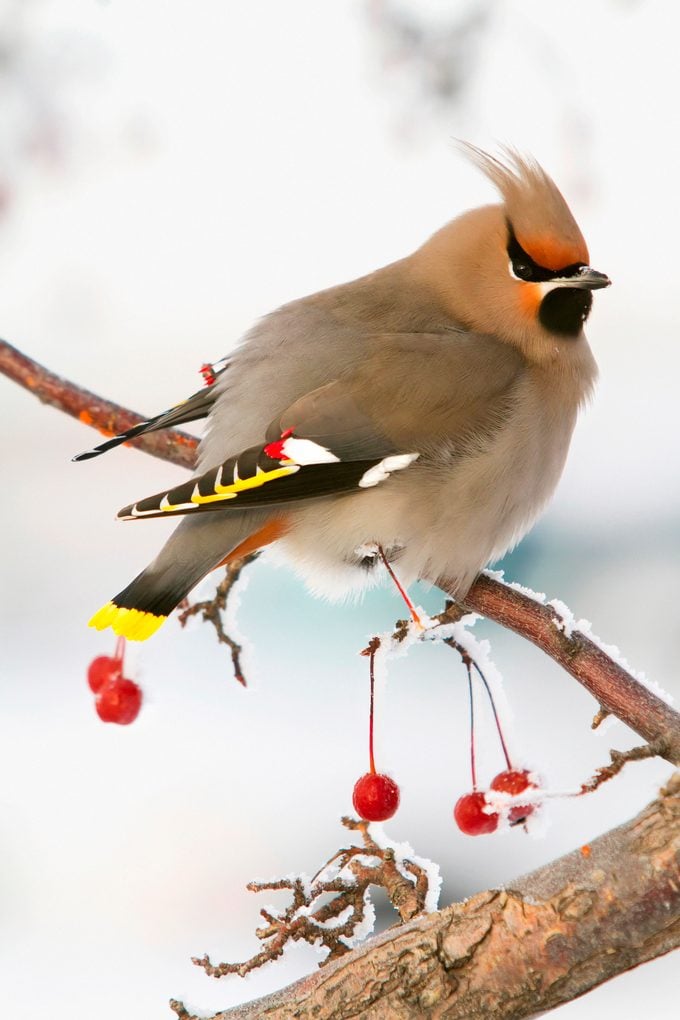
Jeff: There’s no clear definition of an irruption in ornithological literature. It’s usually described as large-scale movements of birds over a broad geographic scale on a regular or irregular cycle, but not on an annual migratory cycle. In North America, it refers to boreal birds moving farther south than they normally would.
Why do irruptions occur some years but not others?
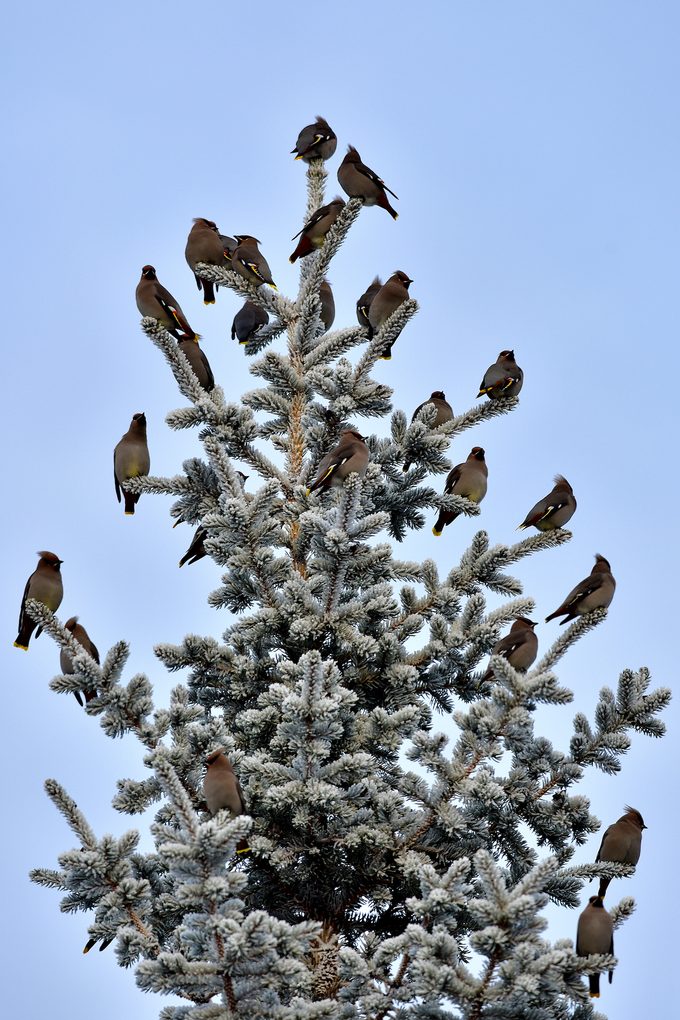
Jeff: The thought is that some years have high seed production, which allows for a higher level of breeding success. If you have a drop in available food, you have more birds competing for less. When the densities reach a high point, stress hormones increase. The constant competition might cause some birds to say, “I’m out of here. This is too much.”
What’s the difference between an irruption versus just a flurry of new visitors?
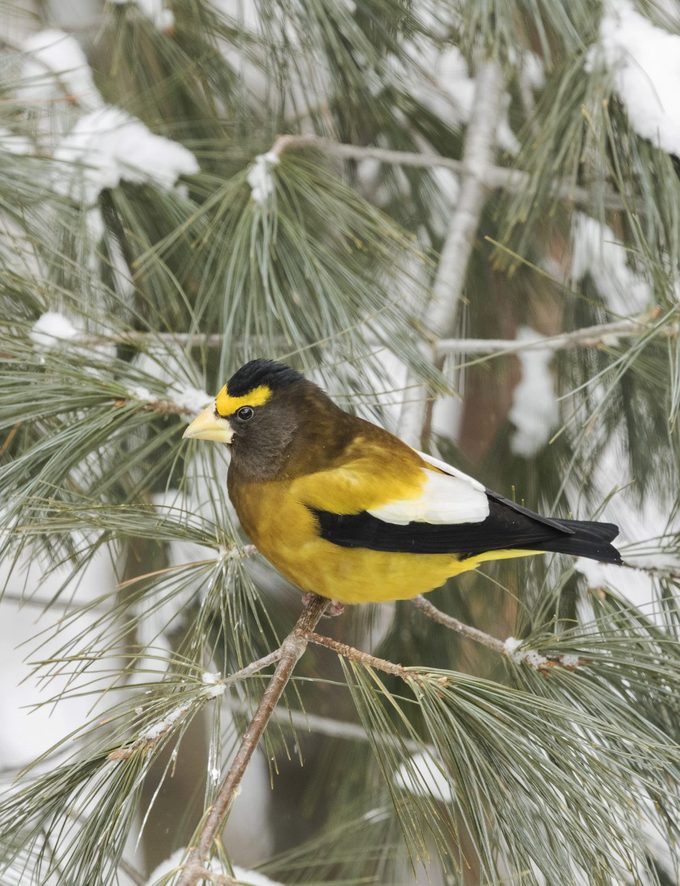
Jeff: When you see a couple of irruptive birds—such as redpolls, pine siskins or other winter finches—at your feeder in September or October, it might be the first clue that something’s happening. For some reason, these birds decided to get out of town early.
If you see more than two, and especially if you see 10 or more, that’s indicative there are more around and that it’s an irruption year.
Why are certain birds known to have irruption years?
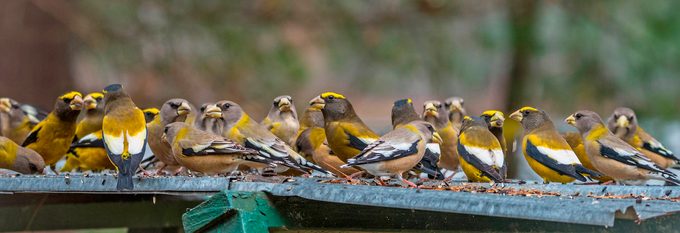
Jeff: Irruptive birds are thought to follow their major food supplies. For example, pine siskins and redpolls eat conifer seeds, and tend to irrupt with the two- to three-year masting cycle of these trees.
Northern owls and raptors have irruptions that could be tied to longer population cycles of small mammals such as snowshoe hares and squirrels. Snowy owls cycle every five or 10 years. American goshawks show up more like every 10 years or longer.
What’s a superflight? How is it different from an irruption?
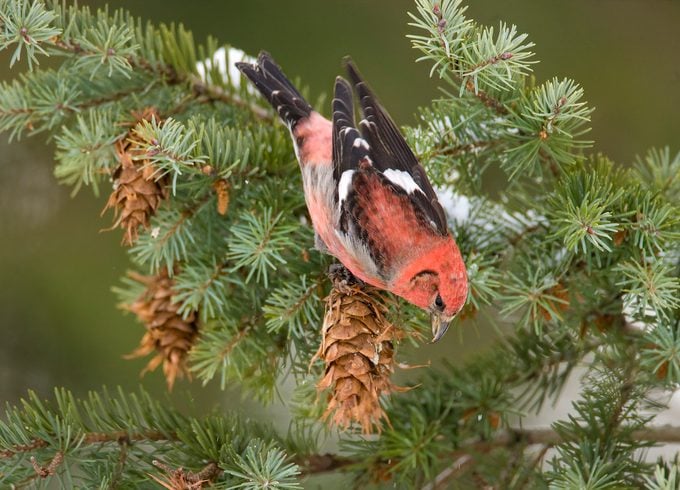
Jeff: A superflight is an irruption of several species of birds in one year. Redpolls, siskins, evening and pine grosbeaks, maybe Bohemian waxwings, and white-winged and red crossbills will all come south. Superflights are harder to predict than irruptions and occur less often.
What are signs of an upcoming irruption?
Jeff: Depending on where you live, you’ll suddenly see a flock of redpolls, siskins or evening grosbeaks at your feeder typically at the onset of winter in November or December. If you’re farther south, it might be a little later, like January. It can last into early spring.
Sometimes in the northern states, you’ll see the return flight from the initial irruption. In March and even April, redpoll and siskin flocks will increase at your feeders because they’re coming from farther south and starting to move north. They find feeders on the way, and you’ll suddenly see this push of hundreds of them at a time as they migrate back north again.
How can you find out if there’s an irruption happening near you?
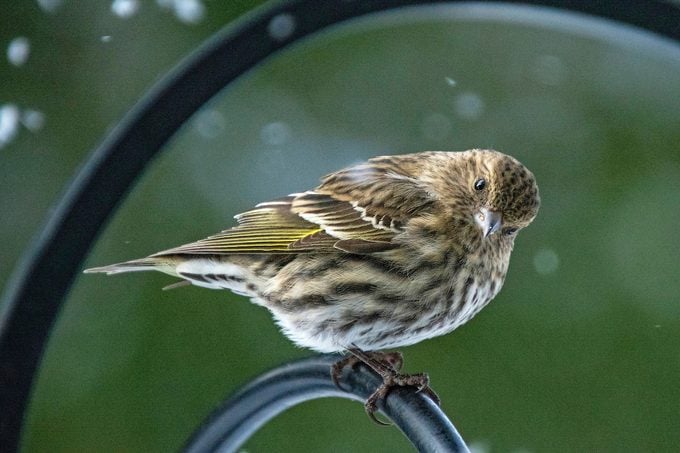
Jeff: Check for updates in your area on the Finch Research Network’s Facebook page: Finches, Irruptions and Mast Crops. Under the Explore tab, the eBird website (ebird.org) lets you search by species or location to see what birds are in your area.
Also, follow social media for your local birding groups. We have a popular backyard birders Facebook page here in Maine. If you’ve seen something, post a comment: “I just saw 10 siskins. Anybody else see anything?”
How can we support irruptive birds in our backyards?
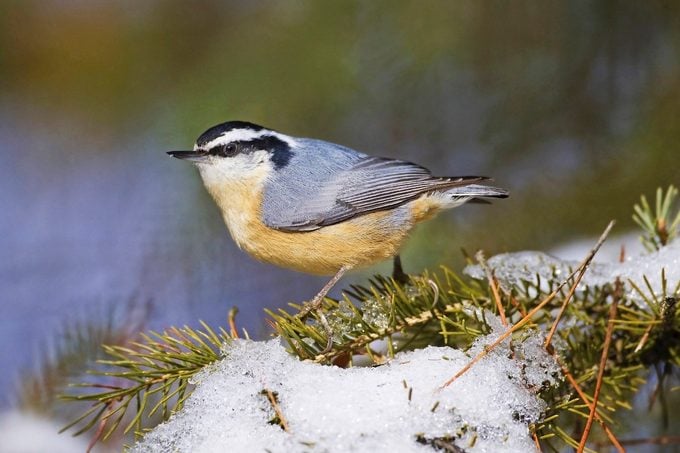
Jeff: Irruptive birds need what any bird needs: food, shelter and water. Attract them with black oil sunflower and Nyjer seeds. Having coniferous trees that finches are familiar with for cover could also help.
These birds are from the North, where in winter there aren’t steady sources of water, so they’ll find little places where snow melts off a stone or a roof, and drink from there. But, of course, it can be helpful to provide a source of water if possible.
What should birders know about owl irruptions?
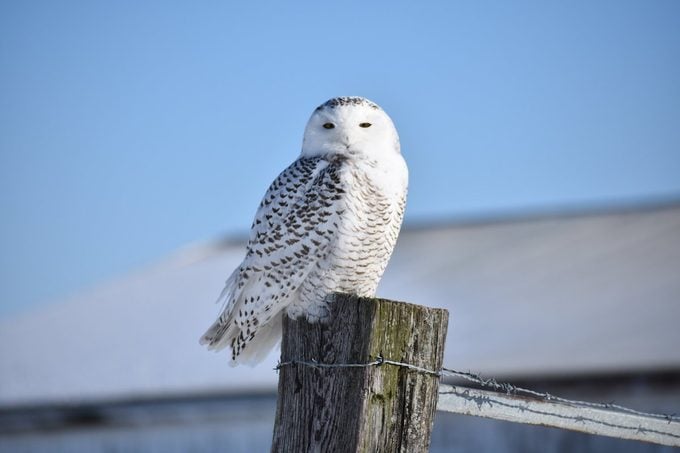
Northern owls like snowies, great grays, boreals, saw-whets and northern hawk owls have different reasons for heading south.
“Some owls have irruptive migrations due to a lack of food, while others move because abundant food has led to high productivity,” said Scott Weidensaul, one of the founders of Project SNOWstorm, a research effort to study snowy owls. “Boreal forest owls tend to be the first, while snowy owls tend to be the second.”
Northern hawk owls, boreal owls and great gray owls fly south when food, such as voles and lemmings, is scarce. Like the cone-dependent songbirds, they move out of their northern homes to find food. But snowies and saw-whets appear in largest numbers when the populations of small mammals are up.
According to Scott, when lots of small mammals are around, snowy owls are very productive nesters. Broods of chicks are large and easily fed, and due to the abundant food, most of the youngsters survive the normally dangerous first weeks away from the nest.
When snow arrives, draping the hunting grounds in a deep layer of fluff, all of those tasty lemmings and voles are suddenly much less accessible and there is a lot of competition for good hunting grounds. The young birds, unequipped to cope with these hardships, irrupt south, in search of something better.
How scientists predict a bird irruption
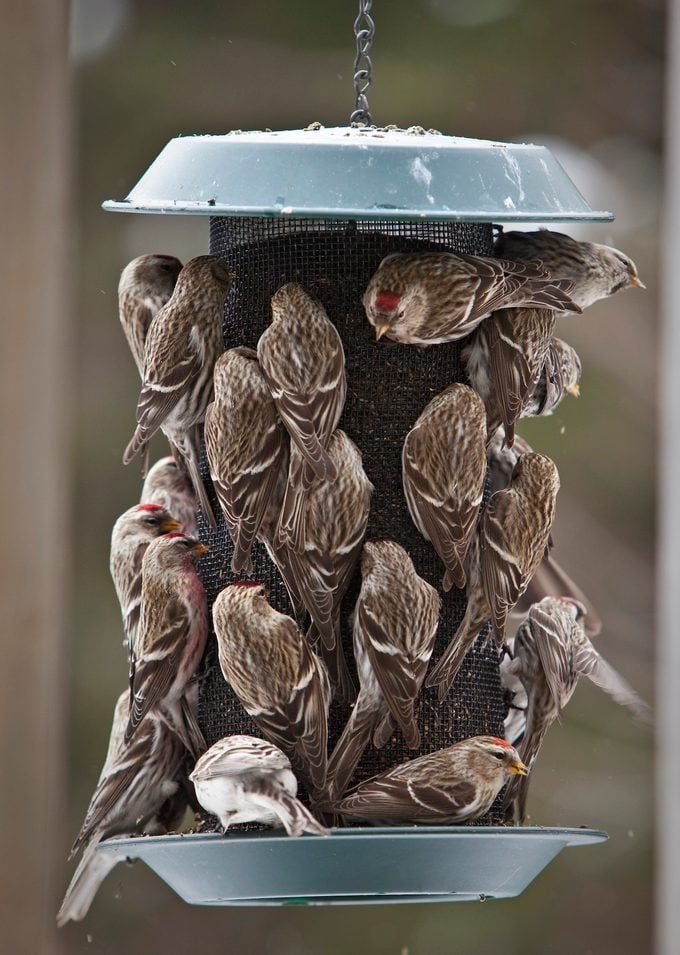
As biologists hash out the different causes of irruptive migrations, they are also learning how to predict them.
Project FeederWatch, administered in the U.S. by the Cornell Lab of Ornithology, describes itself as “a winter-long survey of birds that visit feeders at backyards, nature centers, community areas, and other locales in North America.” Emma Greig, project leader there, said, “By looking at feeder count data in past years, we can clearly see when irruptive migrations have occurred. From there we can look at the climate and weather conditions and see what those years may have had in common.”
By analyzing that data across the north over time, it’s possible to determine which species, if any, are likely to appear further south the following winter.
The trouble, however, is that the arctic and boreal forests are vast regions with a lot of variability from one part to another. What is happening in Alaska may not reflect what’s going on in eastern Canada. Those who study this phenomenon admit that irruptive migrations are still not fully understood.
Irruption All-Stars
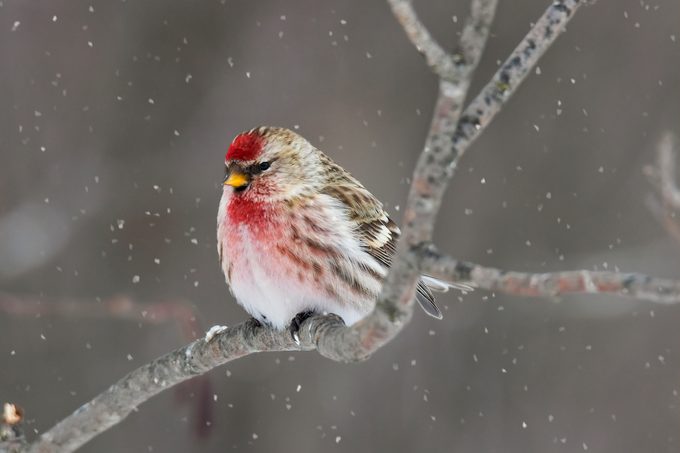
Keep an eye out for these visitors known to stop by during winter
- Bohemian waxwings
- Common redpolls
- Evening grosbeaks
- Hoary redpolls
- Pine grosbeaks
- Pine siskins
- Purple finches
- Red-breasted nuthatches
- Red crossbills
- White-winged crossbills




















